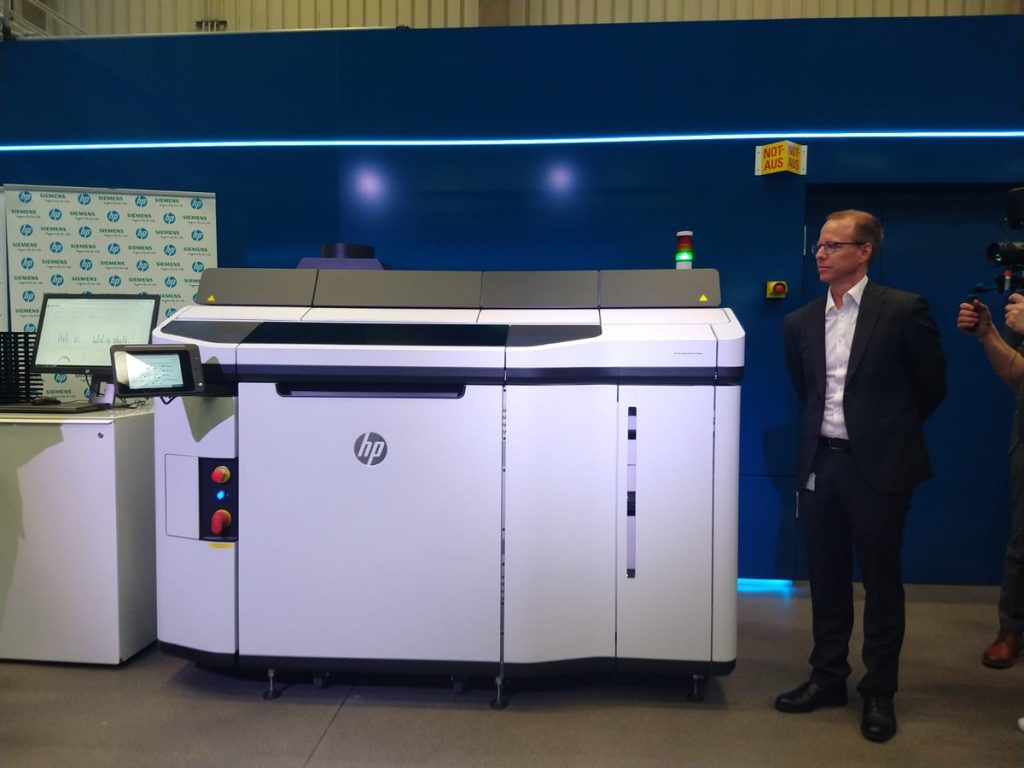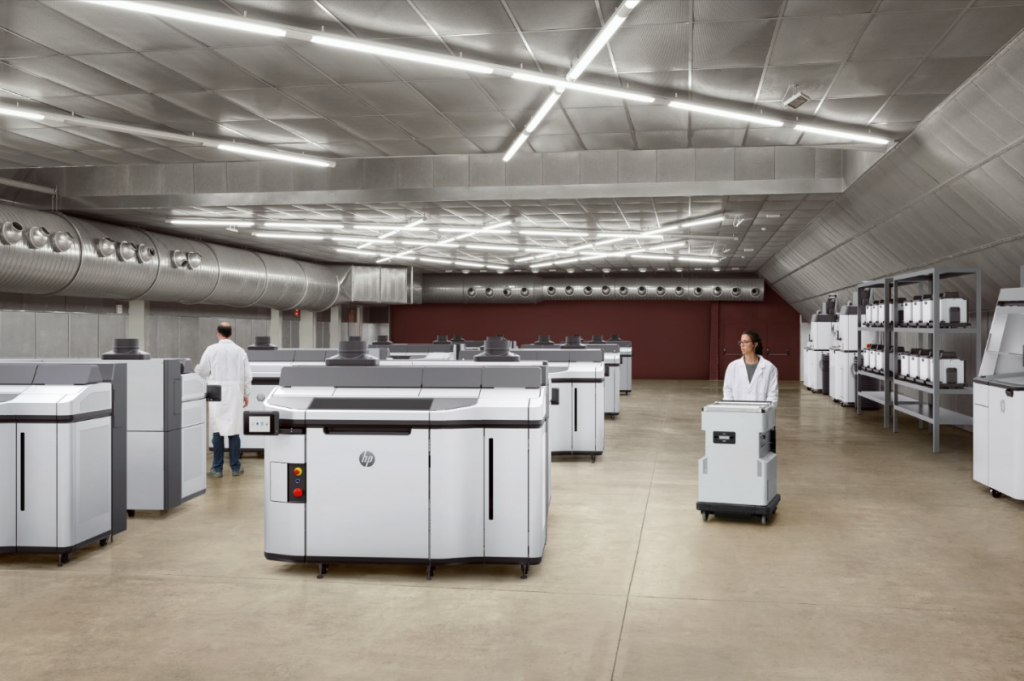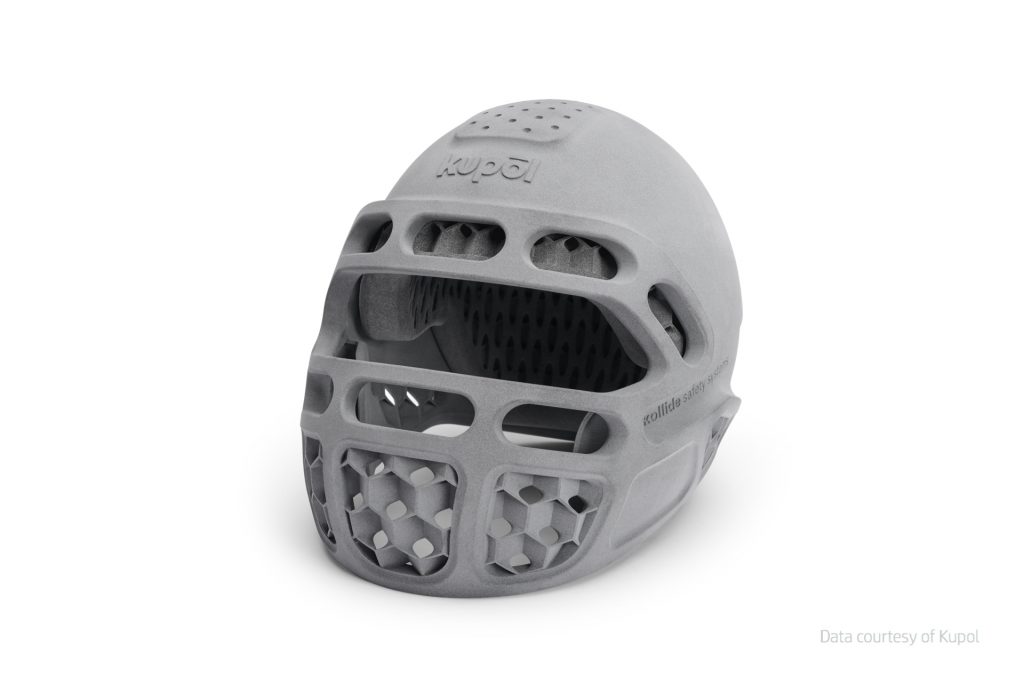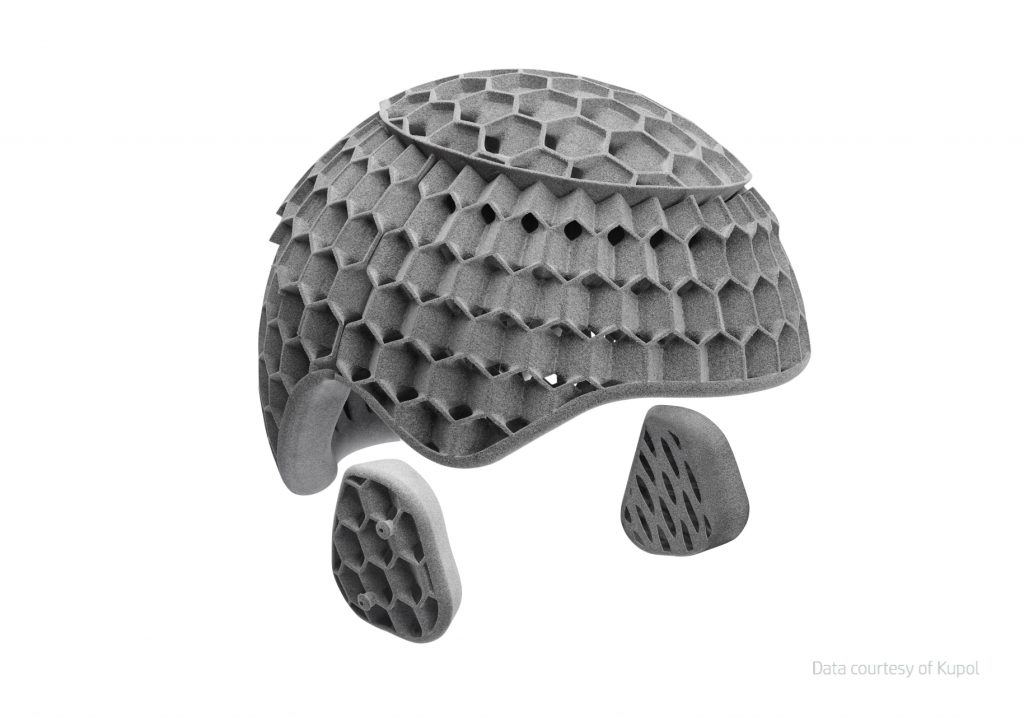Global information technology company HP has today launched a new line of Jet Fusion 3D printers. Named the 5200 series, HP’s latest machines target volume production, with accuracy and repeatability likened to injection molding.
One piece of a four-part announcement, the company also released a new flexible TPU for Jet Fusion, confirmed new industrial alliances, and introduced its Digital Manufacturing Network.
In a briefing on the announcement Ramon Pastor, Vice President and General Manager of HP, told press, “The HP Jet Fusion 5200 Series unlocks production opportunities to move them into digital, thanks to its manufacturing predictability, breakthrough economics, and the enablement of new applications.”
3D Printing Industry is also on site at Siemens’ facility in Erlangen, Germany, where the announcement was officially made earlier today.

Inside the HP Jet Fusion 5200 Series
In his presentation on the new 3D printer, Pastor explained that the new 5200 series is part of a natural progression at the company. The 500/300 series targeted functional prototyping and the 4200, is aimed at short runs and production.
The new 5200 series is HP’s 3D printer for volume production. Volume production as defined by HP is production runs in the thousands of parts. Depending on size and complexity, this number can reach tens of thousands or even hundreds of thousands of parts.
The main driver of this productivity, according to Pastor, is the upgraded power of lamps inside 5200 3D printers. “The power of the lamps now is significantly higher,” he adds, “which enables us [to do more with] one pass [of the printhead] and at the same time enable us in the future to fuse materials with much higher temperature.” The series has also been released alongside a cooling unit, which automatically removes a finished print bed and replaces it with a fresh one to minimize downtime.

So far the HP Jet Fusion 5200 Series comprises three machines: the 5200, 5210 and 5210 Pro. Though all made for the same purpose, each system in this series has incremental differences when it comes to running costs and the volume required by the customer. In this respect, the 5200 has a threshold of around 800 parts per week where it will become more economical to upgrade to the 5210. Each machine has certain under-the-hood improvements too that would warrant extra investment. Examples in the 5210 include better scanner calibration for the print bed, and its ability to work with a wider range of materials.
The digital aspect of the new 5200 series is bolstered by three new software releases: HP 3D Process Control, HP 3D Center and the HP 3D Parts Assessment Service.
Available to order from today, the 5200 series has already been tested by several early access partners. Partners include leading car maker Jaguar Land Rover, Canadian helmet manufacturer Kupol, American 3D printing service bureau Sculpteo, and Belgium’s Materialise, which has also formed a new alliance with HP.

New industrial alliances for HP 3D printing
HP’s new “industrial alliances” announced today are with Siemens, BASF and Materialise.
With Siemens, the company is developing a joint solution for applying additive manufacturing in industrial and automotive environments. The software branch of Siemens will also be helping HP with digital factory development. Klaus Helmrich, CEO of Siemens Digital Industries, comments, “Siemens and HP are thinking ahead to the future and are bringing together the best from both companies in a complete, industry-specific solution that will accelerate the adoption of industrial additive manufacturing […]” The goal of the collaboration, Helmrich states, is to help customers “increase flexibility, efficiency, and speed of digital manufacturing.”
With BASF, HP has been developing new application-driven materials for Jet Fusion technology. Focusing on the newly launched ULTRASINT TPU, the first material of more yet to come for Jet Fusion, the partners have shared three new case studies with early access customers of the 5200 series. The first, for Danish wind turbine manufacturer Vestas, is a 3D printed clamp which provides heightened impact absorption, as well as scratch resistance. The second, is a sports helmet for Kupol, which has helped the company achieve improved shock absorption, breathability and lightness in the finished object. The third, is a wheel cover for HP’s own textile printers.

With Materialise, HP will be integrating the 5200 series within the Belgian company’s Build Processor and Magics 3D Print Suite. As an initial partner of the new HP Digital Manufacturing Network, Materialise will also be using Jet Fusion machines to deliver 3D printed parts to the European market.
“The market is clearly embracing 3D printing for production and, as a long-standing HP partner, we are proud to expand our collaboration to new areas,” comments Fried Vancraen, Founder and CEO of Materialise. “Our customers are excited by our tighter integration with HP, our joint work on new applications and materials, and our commitment to scale high-quality part production.”
The HP Digital Manufacturing Network
In the final announcement from today, the HP Digital Manufacturing Network founded with members including Forecast 3D, GKN Powder Metallurgy, GoProto, Jabil, Materialise, Parmatech, and ZiggZagg NV. As members, these companies have been qualified by HP to produce 3D printed parts using Jet Fusion and/or Metal Jet technology.
More partners are expected to join this network in the coming months. Presently however, the HP Digital Manufacturing Network covers the United States, Asia, and Europe.
Vote now in the 2019 3D Printing Industry Awards.
For all of the latest news, subscribe to the 3D Printing Industry newsletter, follow us on Twitter, and like us on Facebook. Looking for something new? Join 3D Printing Jobs now and advertise to attract new talent.
Featured image shows the HP Jet Fusion 5200 3D Printing Solution. Image via HP


